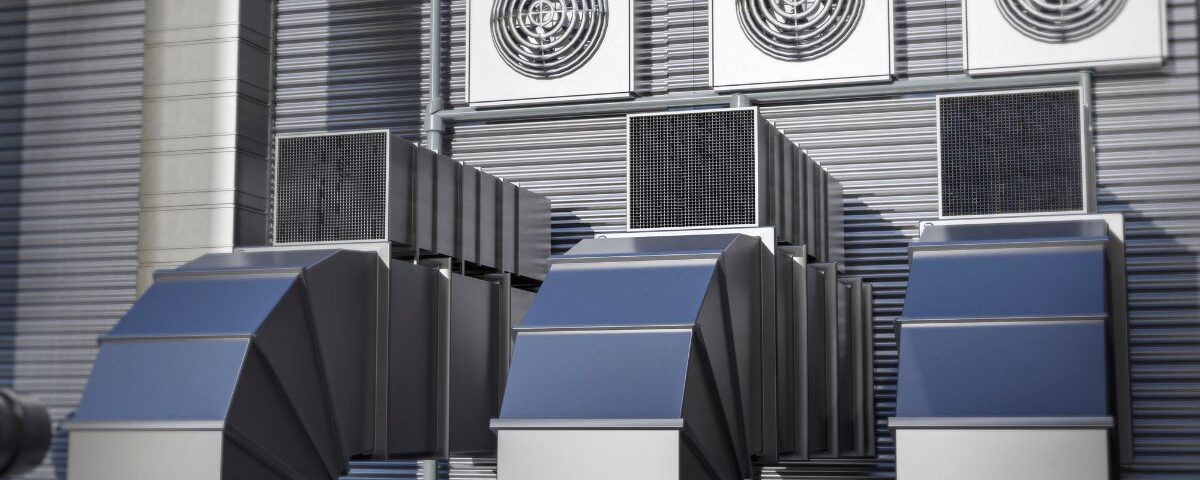Ventilation Systems in Qatar – Design, Installation & Maintenance.

Top Lift Pressurization Systems Services for High-Rise Buildings
December 30, 2023
What is Aerosol Fire Suppression System: How They Work
January 9, 2024A ventilation system is a network of ducts, fans and other equipment that helps to circulate air in a building. It can be used to remove stale air and bring in fresh air, control temperature and humidity, and remove pollutants. Ventilation systems are essential for maintaining a healthy and comfortable indoor environment. These systems are used in a wide variety of buildings, including homes, offices, schools, hospitals, and commercial facilities.
Types of ventilation systems
There are two main types of ventilation systems:
Natural ventilation: Natural ventilation relies on wind and temperature differences to drive air movement. It is the simplest and most cost-effective type of ventilation, but it is not always reliable. Natural ventilation can be achieved through a variety of methods, such as opening windows and doors, using vents and louvers, and taking advantage of the stack effect.
Spot ventilation: Spot ventilation uses localized ventilation systems, such as exhaust fans and bathroom ventilation, to remove pollutants and stale air from specific areas of a building. Spot ventilation is not a complete ventilation strategy, but it can be used to supplement natural ventilation or whole-house ventilation.
Whole-house ventilation: Whole-house ventilation systems provide controlled, uniform ventilation throughout a building. Whole-house ventilation systems can be either mechanical or natural. Mechanical whole-house ventilation systems use fans to move air through the building. Natural whole-house ventilation systems use wind and temperature differences to drive air movement.
Benefits of a Well-Maintained Ventilation System
There are many benefits to having a well-maintained ventilation system, including:
- Improved indoor air quality: Ventilation systems help to remove harmful pollutants from the air, such as dust, pollen, mold spores, and chemicals. This can lead to improved health and well-being for occupants, as well as a reduction in allergies and other respiratory problems.
- Increased comfort: Ventilation systems help to regulate temperature and humidity levels, creating a more comfortable indoor environment. This is especially important in Qatar, where the climate can be very hot and humid.
- Reduced energy costs: Well-designed and maintained ventilation systems can help to reduce energy costs by using less energy to heat and cool buildings.
- Extended equipment life: Ventilation systems help to protect equipment and other assets from damage caused by dust, moisture, and other pollutants.
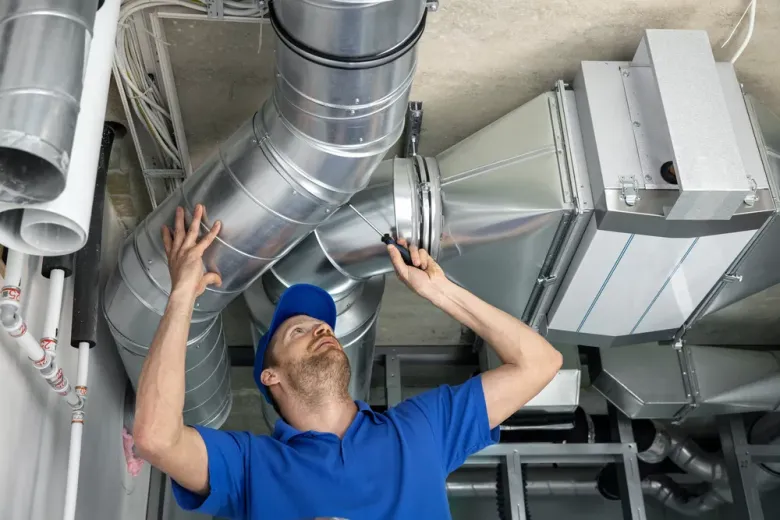
How Ventilation Systems Work
Ventilation systems work by exchanging indoor air with outdoor air. This is done to improve indoor air quality and to remove pollutants from the air. There are two main types of ventilation systems: natural ventilation and mechanical ventilation.
Natural ventilation relies on wind and temperature differences to drive air movement. For example, opening windows and doors can create a cross breeze that helps to remove stale air and bring in fresh air. Natural ventilation is often used in homes and other small buildings, but it can be less effective in large buildings or in climates with extreme weather conditions.
Mechanical ventilation uses fans to move air between indoors and outdoors. Mechanical ventilation systems can be designed to provide whole-house ventilation or to spot-ventilate specific areas, such as kitchens and bathrooms. Mechanical ventilation systems are often used in commercial buildings and high-rise apartments, where natural ventilation is not sufficient.
There are three main types of mechanical ventilation systems:
- Exhaust ventilation systems work by removing stale air from the building. This creates a negative pressure inside the building, which draws in fresh air from outside through cracks and leaks in the building envelope. Exhaust ventilation systems are relatively simple and inexpensive to install, but they can waste energy if the building is not well-insulated.
- Supply ventilation systems work by forcing fresh air into the building. This creates a positive pressure inside the building, which forces stale air out through cracks and leaks in the building envelope. Supply ventilation systems are more energy-efficient than exhaust ventilation systems, but they can be more expensive to install.
- Balanced ventilation systems combine both exhaust and supply ventilation. They are the most energy-efficient type of mechanical ventilation system, but they are also the most expensive to install.
In addition to the type of system, ventilation systems can also be classified by their purpose. Some common types of ventilation systems include:
- Whole-house ventilation systems provide ventilation for the entire building. They are typically used in homes and other small buildings.
- Spot ventilation systems provide ventilation for specific areas, such as kitchens, bathrooms, and laundry rooms. They are typically used in commercial buildings and high-rise apartments.
- Heat recovery ventilation (HRV) systems transfer heat from the outgoing exhaust air to the incoming fresh air. This can help to reduce energy costs, especially in cold climates.
- Energy recovery ventilation (ERV) systems transfer both heat and moisture from the outgoing exhaust air to the incoming fresh air. This can help to reduce energy costs and improve indoor air quality, especially in humid climates.
Ventilation systems are an important part of maintaining good indoor air quality. By exchanging indoor air with outdoor air, ventilation systems help to remove pollutants, such as dust, mold, and volatile organic compounds (VOCs).
Industrial Ventilation Systems
Industrial ventilation systems are designed to remove harmful pollutants from the air in industrial workplaces. These pollutants can include dust, fumes, gases, and vapors. Industrial ventilation systems can also help to control temperature and humidity levels in the workplace.
There are two main types of industrial ventilation systems: local exhaust ventilation (LEV) and general ventilation.
- Local exhaust ventilation (LEV) systems are designed to remove pollutants from the air at the source. This can be done using a variety of methods, such as hoods, ducts, and fans. LEV systems are the most effective way to control airborne pollutants in the workplace.
- General ventilation systems are designed to remove pollutants from the air throughout the workplace. This can be done using fans, windows, and doors. General ventilation systems are not as effective as LEV systems at controlling airborne pollutants, but they can be used to supplement LEV systems or to provide ventilation in areas where LEV is not practical.
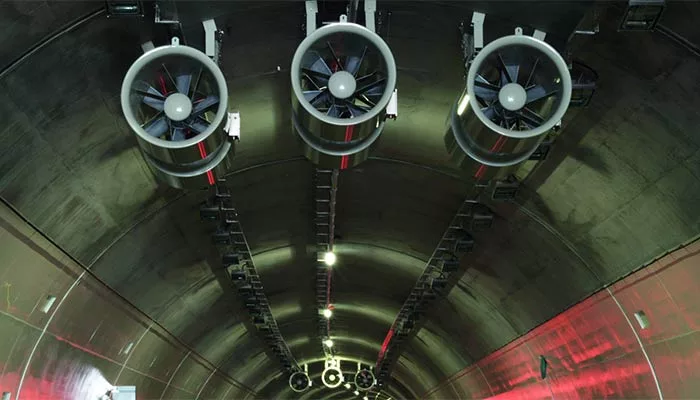
Jet Fan Ventilation Systems for Basement Car Parking
Jet fan ventilation systems are a type of industrial ventilation system that is commonly used in basement car parks. Jet fans are high-powered fans that are used to create a high-velocity airflow. This airflow can be used to remove pollutants from the air, such as carbon monoxide, and to control the temperature and humidity in the car park.
These systems can be used to provide either supply ventilation or exhaust ventilation.
- Supply ventilation systems use jet fans to blow fresh air into the car park. This fresh air can help to displace stale air and pollutants.
- Exhaust ventilation systems use jet fans to exhaust stale air and pollutants from the car park.
Jet fan ventilation systems are a very effective way to ventilate basement car parks. They can provide a high-velocity airflow that can quickly remove pollutants from the air and create a more comfortable environment for occupants.
Here are some of the benefits of using jet fan ventilation systems in basement car parks:
- Improved indoor air quality: Jet fan ventilation systems can help to remove pollutants from the air, such as carbon monoxide, nitrogen dioxide, and particulate matter. This can improve the indoor air quality in the car park and reduce the risk of health problems for occupants.
- Improved safety: Jet fan ventilation systems can help to improve safety in the car park by removing smoke and other pollutants from the air in the event of a fire.
- Reduced energy costs: Jet fan ventilation systems can help to reduce energy costs by reducing the need for air conditioning and heating.
- Improved comfort: Jet fan ventilation systems can help to create a more comfortable environment for occupants by controlling the temperature and humidity in the car park.
Overall, jet fan ventilation systems are a very effective and efficient way to ventilate basement car parks. They can provide a number of benefits, including improved indoor air quality, improved safety, reduced energy costs, and improved comfort.
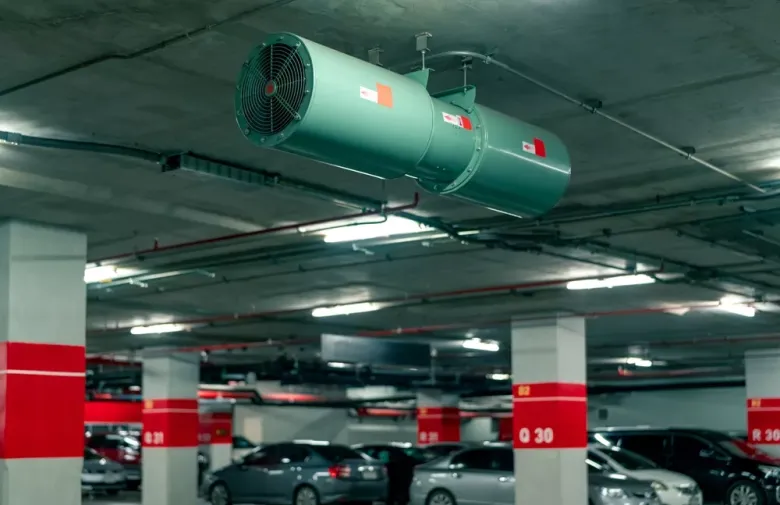
Design and Installation of Ventilation Systems
Ventilation systems are designed to provide fresh air to a building and remove stale air, pollutants, and moisture. They can be either passive or active. Passive ventilation systems rely on natural forces such as wind and convection to move air through a building. Active ventilation systems use fans and other mechanical devices to move air.
Design of Ventilation Systems
The design of a ventilation system depends on a number of factors, including the type of building, the number of occupants, the activities that take place in the building, and the climate.
The first step in designing a ventilation system is to determine the required airflow rate. This is the amount of air that needs to be moved through the building to maintain a comfortable environment and remove pollutants. The required airflow rate is calculated based on the number of occupants, the activities that take place in the building, and the building’s size and construction.
Once the required airflow rate has been determined, the next step is to design the system layout. This includes selecting the type of ventilation system, the location of the air supply and exhaust inlets and outlets, and the size and configuration of the ducts.
The type of ventilation system that is selected depends on the specific requirements of the building. The most common types of ventilation systems are:
- Local exhaust ventilation (LEV): LEV systems are used to remove pollutants from specific sources, such as welding stations, cooking ranges, and chemical storage areas.
- General ventilation: General ventilation systems provide fresh air to an entire building or room.
- Mixed ventilation: Mixed ventilation systems use a combination of LEV and general ventilation.
The location of the air supply and exhaust inlets and outlets is important to ensure that the system distributes air evenly throughout the building and removes pollutants effectively. The size and configuration of the ducts is also important to minimize resistance to airflow.
Installation of Ventilation Systems
The installation of ventilation systems should be done by qualified professionals. The following are some general steps involved in the installation of a ventilation system:
- Prepare the site: This includes marking the location of the air supply and exhaust inlets and outlets, and installing any necessary supports for the ducts.
- Install the ducts: Ducts can be made from a variety of materials, including metal, plastic, and fabric. The type of duct that is used depends on the specific requirements of the system.
- Install the fans and other equipment: Fans are used to move air through the ducts. Other equipment that may be needed includes filters, heaters, and coolers.
- Test the system: Once the system is installed, it should be tested to ensure that it is working properly. This includes checking the airflow rate and distribution, and the performance of the fans and other equipment.
Here are some additional tips for designing and installing ventilation systems:
- Use energy-efficient equipment: Ventilation systems can consume a significant amount of energy. It is important to use energy-efficient equipment to minimize operating costs.
- Design the system for easy maintenance: Ventilation systems should be designed for easy access and maintenance. This will help to ensure that the system operates efficiently and safely.
- Comply with all applicable codes and regulations: Ventilation systems must comply with all applicable codes and regulations. This includes codes for fire safety, energy efficiency, and air quality.
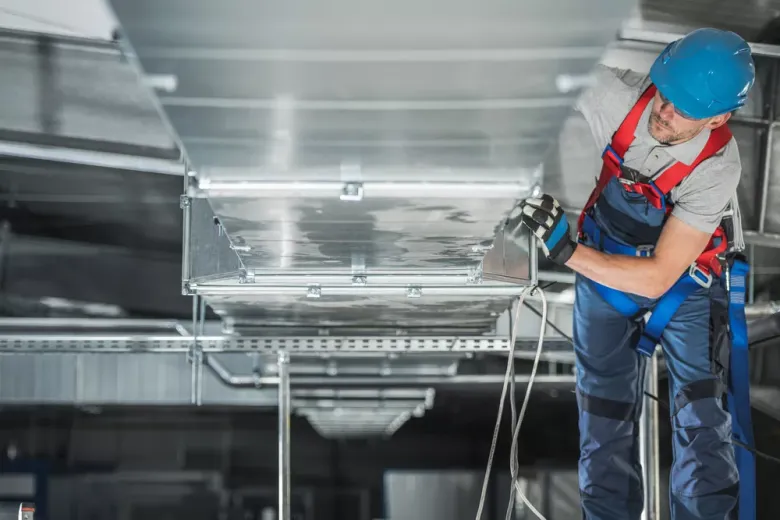
Best ventilation system services in Qatar – Design, Installation & Maintenance
Do you need the best ventilation system services in Qatar?
If so, then look no further! We are the leading provider of ventilation system services in Qatar, and we offer a wide range of services to meet your needs. We can design, install, and maintain ventilation systems for all types of buildings and spaces, including commercial buildings, residential buildings, and industrial facilities.
We have a team of experienced and qualified professionals who are dedicated to providing our customers with the highest quality services possible. We use the latest technologies and equipment to ensure that your ventilation system is operating efficiently and effectively.
We offer a wide range of services, including:
- Ventilation system design: We can help you design a ventilation system that is tailored to your specific needs and budget.
- Ventilation system installation: We have the experience and expertise to install ventilation systems of all sizes and complexities.
- Ventilation system maintenance: We offer regular maintenance and repair services to keep your ventilation system operating properly and efficiently.
Contact us today for a free consultation! We will assess your needs and recommend the best ventilation system solution for your home or business.
To contact us:
- Call us at: +974 55324195
- Email us at: sales@ceasefireme.com
We look forward to hearing from you!

